Thank you Ros for inviting me to be part of your Back to Sewing Basics Series. I'm only slightly addicted to fabric (who am I kidding? I have a real fabric problem) which is why Ros has asked me to share with you about different types of fabrics.
The Make: Fiber Cloth is made of fibers. Fibers are twisted together to create threads, which can be woven or knit to create cloth. While there are synthetic fibers (like polyester) the most widely used fibers are natural. Hemp, rayon, linen and cotton come from plant fibers. Yarn is spun from a sheep's wool. Silk is collected from the silk worm's cocoon. And each fiber is unique. Some are sturdy and thick while others are smooth and flexible. Linen is super absorbent but will wrinkle the second you pull it off the hanger (and sometimes before), silk is airy and drapes well but you'll have to be careful not to snag it on the car door when stepping out to dinner, wool is warm and soft but not really the best choice for summer, rayon will put you in the poor house with all that dry-cleaning and cotton, which for many of you is your fabric of choice, is fresh and cool and perfect for quilting. Synthetic fibers are man-made and are usually used to make those water-resistant, colorfast and wrinkle free fabrics you see on umbrellas and duffle bags. My dad wears button-up shirts to work everyday and usually opts for the wrinkle-free poly blends because he doesn't like to iron. I've got to tell you, the cotton-poly blend does have quite an allure, but I rarely sew with synthetics, and the only cotton-poly in my stash is reserved for some medical scrubs my mom has asked me to whip up for her. These synthetic fibers are unique as well. You should always consider a fabric's qualities before using it to attack a new project. Lycra spandex is great for swimsuits and spanx. As mentioned, polyester let's you sit around in your clothes all day without worrying about them being too wrinkled at that 4 o'clock meeting with your boss.
The Weave: Warp and Weft Fabric is made on a loom. What's a 'loom', you ask? Here. Let me show you:

The Weave: Patterns There are
The Knit: Make Knits are my favorite to wear. They are so stretchy and soft and contour to your body in just the right way. Knits are made on commercial knitting machines which use a variety of needle sizes and patterns to create the various knits for purchase. Some are ribbed, some have a cable pattern, and some are smooth. Knits are made to stretch. Rather than being made on a loom with overlapping threads, knits are, well, knitted, giving ease to the threads to move around and be misshapen. The nice thing about knits is they won't fray, so if you are making a knit top, there is no need to hem the bottom (unless you just like the finished look, of course). The bad thing is they are a bear to work with. Being stretchy and, at times, slippery, knits are difficult to maneuver through a sewing machine. Working with knits probably isn't the best idea if you are a newbie to the whole sewing thing.
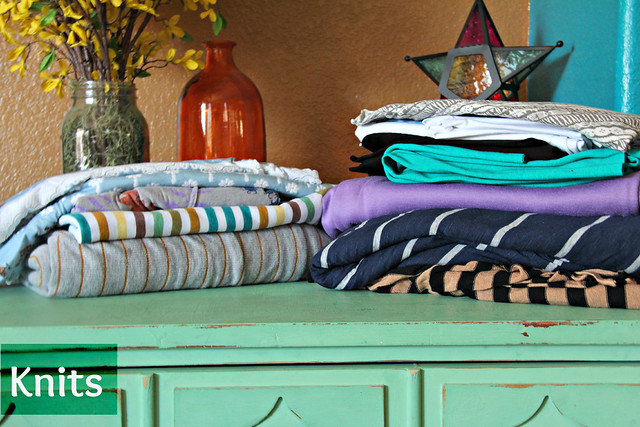
The Outcasts: Nonwoven Fabric Some fabrics are neither knit nor woven. These are the outcasts; the weirdos; the strange-lings. Oil cloth, leather, faux fur, lace, minky, and felt all fall in this category. These are best used for small projects or projects that won't need much washing. Now that you know more about the make-up of fabric, I would like to share with you the types and manufacturers I use most often.

Voile: Voile is a thin fabric with a soft hand. It's great for making shirts and dresses because of it's lightweight and airy nature. Here, I used voile to make an infinity scarf. I like to bind and back heavy quilts with voile.

Flannel: I LOVE flannel. Its so super soft and toasty! This woven fabric is fairly absorbent which is why I have made burp clothes, bibs and nursing pads using it. Flannel is great to quilt with, as well. It creates the best winter snuggle sessions!

Linen/Canvas Blends: Linen and canvas are sturdy and earthy. They have a rougher hand than quilting cottons, but they aren't uncomfortable in blankets and shirts. I like to use them for bags and zipper pouches best.
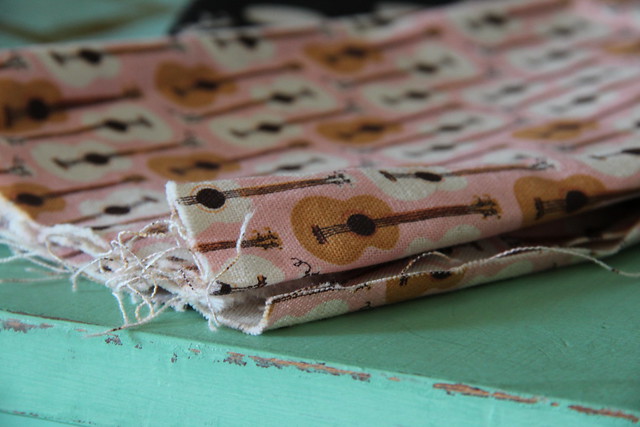
Here, you can see the threads are larger making linen and canvas thick.
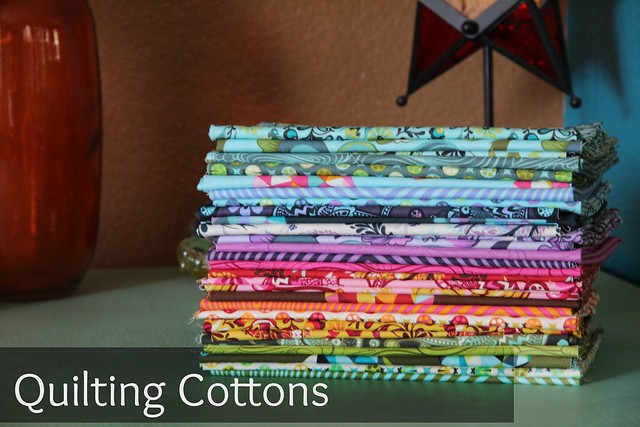
Quilting Cottons: Because I am a quilter, I use quilting cottons more than any other type of fabric. Quilting cottons are tightly woven and easy to sew. Some manufacturers make softer quilting cottons than others. For example, Art Gallery Fabrics are high quality with a soft and smooth hand. These sew together like butter and since they almost feel like voile, they are great for garment sewing.
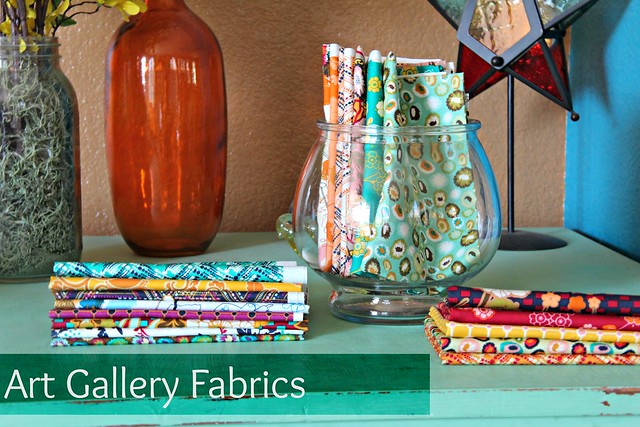
One of my other favorite fabric manufacturers is Free Spirit. Their fabrics feel almost brushed, like your favorite pair of cotton pajama pants, the ones that have been washed 10,481 times and are completely broken in. When I'm purchasing fabric and I don't know which fabric I want, I will err on the side of Free Spirit. Free Spirit also made some of my favorite fabric lines:
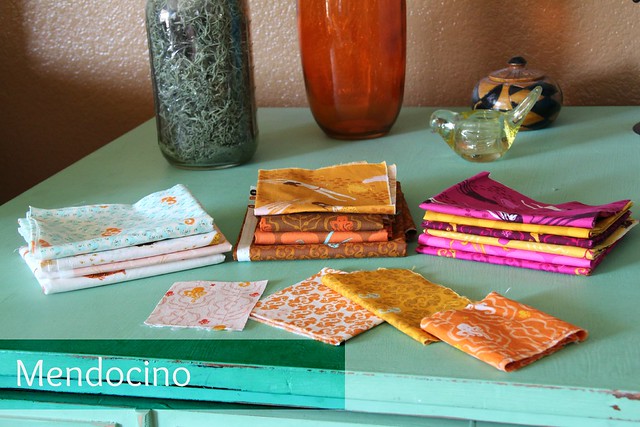
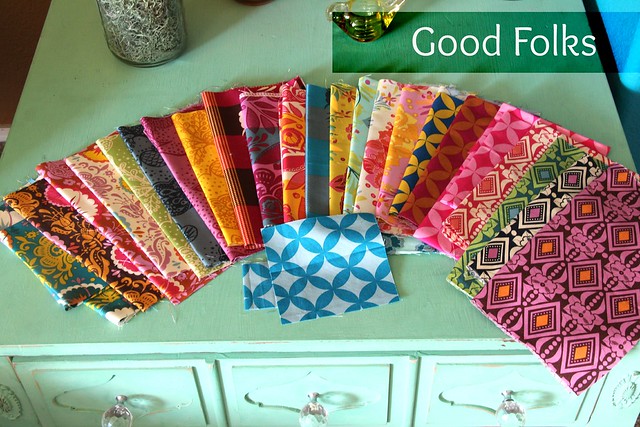
And I've already shown you The Birds and The Bees. Free Spirit turns out some seriously great lines. Other manufacturers producing quality fabrics are Riley Blake, Michael Miller, Windham Fabrics, and Andover Fabrics, just to name a few. These manufacturers are part of the group considered "quilt shop quality". Big box stores like Jo-Ann's, Hancock, Wal-Mart, and Hobby Lobby, and in Australia, Spotlight and Lincraft, sell fabric with a cheap price tag, but buyer beware: you get what you pay for. Quilt shop quality fabrics far surpass the quality of fabrics found in these shops, hence the reason many online swaps and bees require participants to stay away from them. You will find quilt shop quality fabrics are made with a higher thread count and stay on the grain more often.
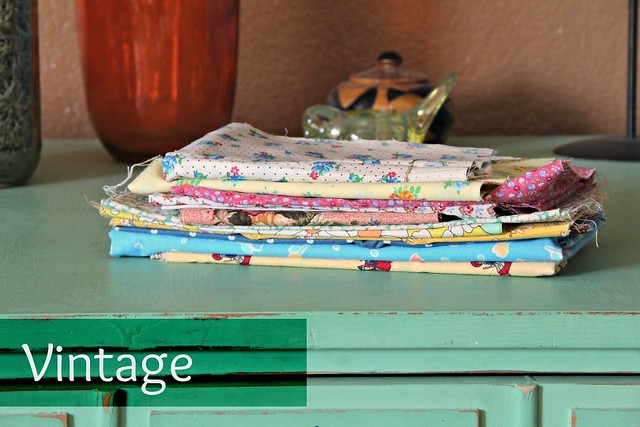
Vintage: When I first started sewing, I wouldn't use pre-washed fabrics since my other fabrics were unwashed. But then I discovered some extremely beautiful vintage fabrics and I decided to try it out. I love the retro designs offered by vintage finds. A word of caution: make sure your vintage fabrics are good quality before you use them in a project. There's nothing worse than working hard on a project only to have it fall apart on you shortly after! Something else that I feel I should address here is Spoonflower.
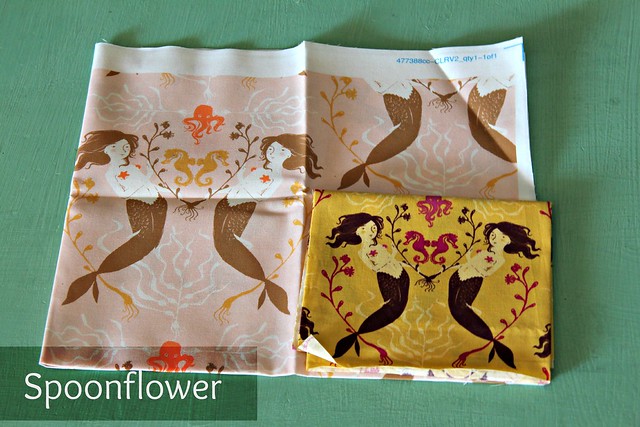
Spoonflower is a company that custom prints fabrics. The fabric is made by printing an image onto your choice of fabric. Unlike fabrics with a woven pattern, these may fade and won't look good on both sides. Also note their designer designs may not be exact to the original artwork as seen here with the Mendocino Presentation Mermaids. Spoonflower fabric is nice though and falls under the "quilt shop quality" category. It is the perfect place to search for unique fabrics for that certain project you've been dreaming up, or a great place to design your own fabric.
I hope these tips have helped you along your journey toward creating your new project! If you ever have any questions on fabric selection, feel free to contact me! I blog at Mommy For Reals.

Thanks so much Danny - such a detailed guide! Make sure you check out Danny's great blog and have a look at her beautiful quilts - they are all wonderful, but my favourites are her Echo and Peacock Elephant quilts!



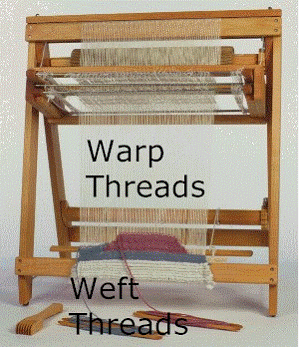
so glad i followed here from Thriving on thursday as i am a wannabe sewist and need to finally understand things like bias and how to select the right fabric (off to check out the rest of your basics series!)
ReplyDeletedeb @ home life simplified
Thanks for the info...Deb is right...the bias thing can be tricky! You are also so right about fabric quality..you DO get what you pay for!
ReplyDeleteAngela
Great job Danny!
ReplyDeleteVery thorough! This is a great guide. :) I agree that Free Spirit is one of my favorite manufacturers.
ReplyDeleteVery interesting reading about warp and weft!
ReplyDeleteAnd to think we sent so many extras just for this shoot ;o)
ReplyDelete